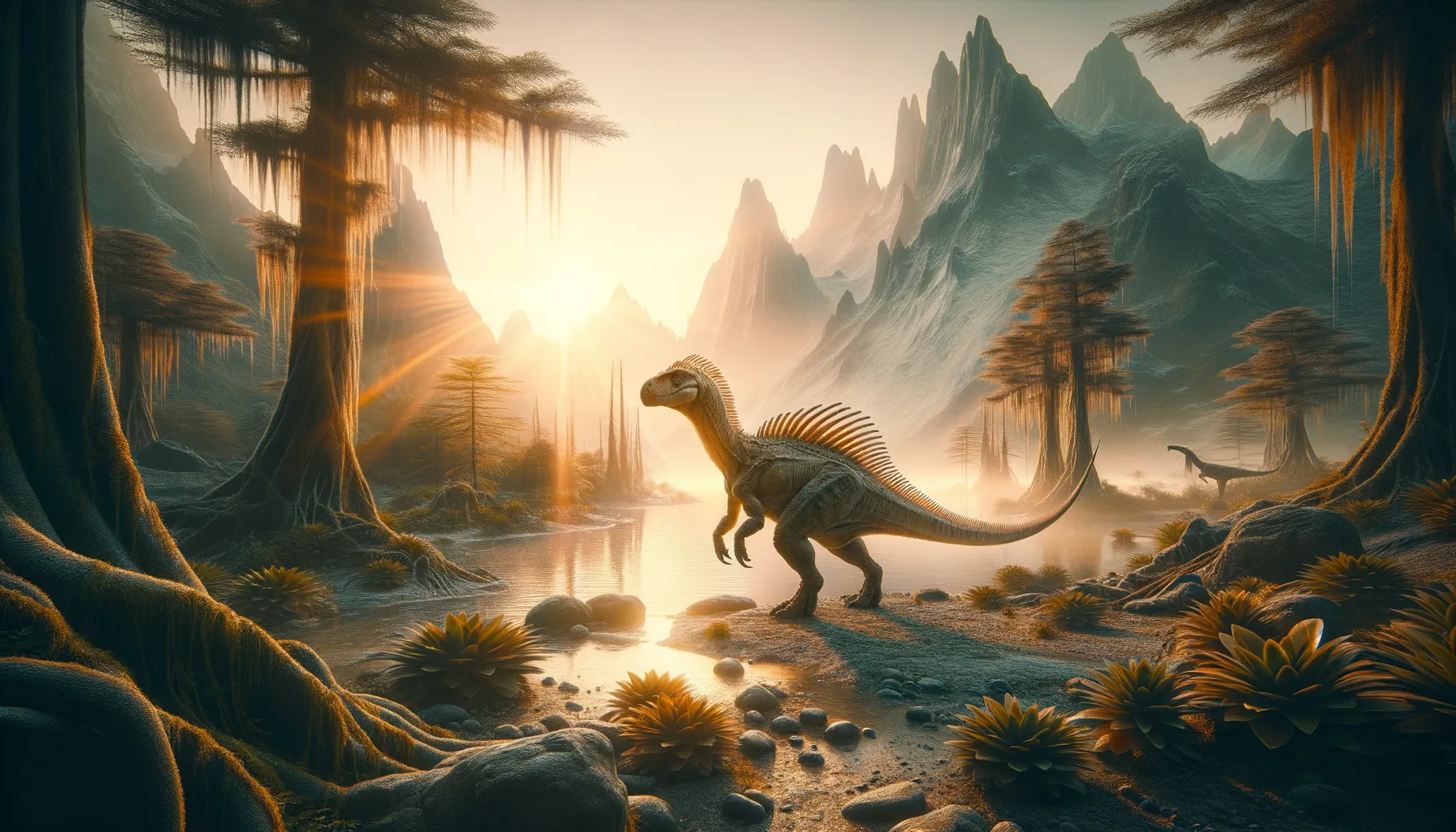
Fulengia
A gentle grazer from the Jurassic age.
Period
Jurassic
Length
Approximately 8 feet long.
Height
Around 3 feet tall.
Weight
Estimated to weigh around 200 pounds.
Fulengia was a small dinosaur from the Jurassic period, discovered in China. This herbivore roamed the ancient landscapes, likely feeding on low-lying plants. Although not as well-known as some of its contemporaries, Fulengia offers valuable insight into the diversity of dinosaur life during its time. Its fossils provide important clues to paleontologists studying the evolution and ecology of herbivorous dinosaurs.
Diet
Fulengia was herbivorous, feeding primarily on plants. It likely consumed ferns, cycads, and other low-growing vegetation that was abundant in its environment.
Hunting
Being a herbivore, Fulengia did not hunt for prey. Instead, its existence was centered around foraging for plant material. Its diet did not involve hunting behavior.
Environmental challenges
Fulengia lived in a period where competition for food among herbivores was intense. It had to coexist with larger dinosaurs that might have competed for the same resources. Additionally, changes in climate and vegetation could pose challenges to its survival as it had to adapt to varying food availability.
Speed
Fulengia was likely slow-moving due to its small size.
Lifespan
Not well-documented, but potentially several years.
First discovery
First discovered in the 1970s in China.
Fun Facts
- Fulengia was a small dinosaur that lived during the early Jurassic period, around 195 million years ago.
- This dinosaur was discovered in the Yimen Formation in China, a site known for its rich fossil findings.
- Fulengia is thought to have been a herbivore, feeding on the lush vegetation of its time.
- It was a bipedal dinosaur, meaning it likely moved around on two legs.
- Fulengia belonged to the same family as more famous dinosaurs like Plateosaurus, which were early relatives of the huge sauropods.
- Its fossils were first described by Chinese paleontologist Yang Zhongjian, also known as C.C. Young, in 1976.
- Although it's not as well-known as other dinosaurs, Fulengia helps scientists understand the diversity of early Jurassic ecosystems.
Growth and Development
Fulengia likely experienced a growth spurt early in its life to reach a size that would help avoid predators. Its development might have been relatively quick, reaching maturity within a few years. Insights into its bone structure suggest a steady growth pattern typical of other herbivorous dinosaurs.
Habitat
Fulengia thrived in the lush, green environments of Jurassic China. It inhabited areas that were rich in plant life, providing ample food and cover. Its habitat would have included forested regions, as well as open plains where food was abundant.
Interaction with other species
Fulengia likely shared its environment with various other herbivores and potential predators. It coexisted with species that might have posed threat, requiring vigilance and possibly herd behavior to stay safe. Interaction was likely cautious, especially around larger carnivorous dinosaurs.
Natural lifespan
Fulengia might have naturally lived for up to 20 years.
Reproduction
Fulengia was likely oviparous, laying eggs in nests. Little is known about its specific reproduction habits, but it might have exhibited behaviors similar to other herbivorous dinosaurs, like group nesting or parental care. Demographics suggest that they could have had numerous offspring to increase survival rates.
Social behaviour
Fulengia might have exhibited social behavior commensurate with group living. Being small, traveling in groups could provide protection against predators. It is possible that they communicated with visual or vocal signals to maintain group structure and foraging efficiency.
Fossil locations
Fossils of Fulengia have primarily been unearthed in China. These fossils help establish a clearer picture of its existence during the Jurassic period. Each discovery adds to the knowledge pool about its distribution and lifestyle.
